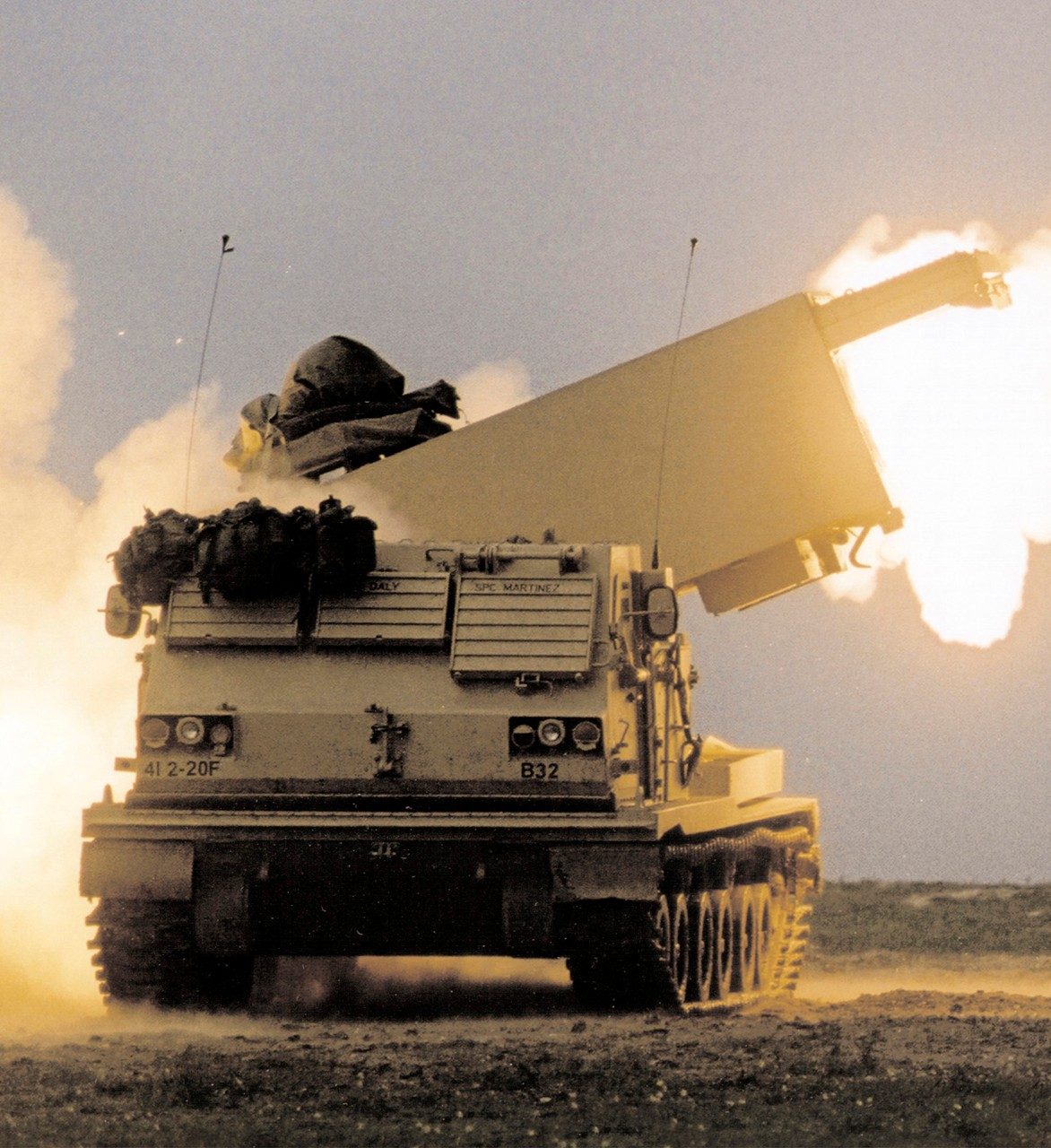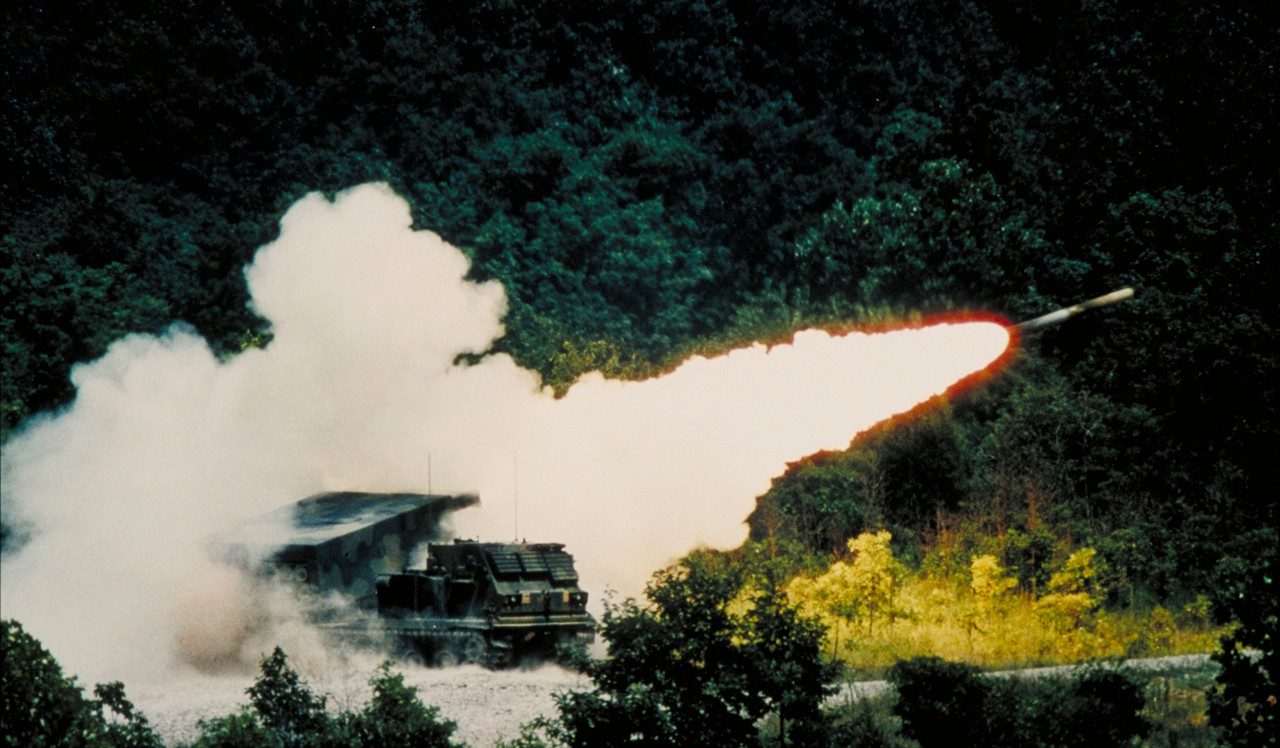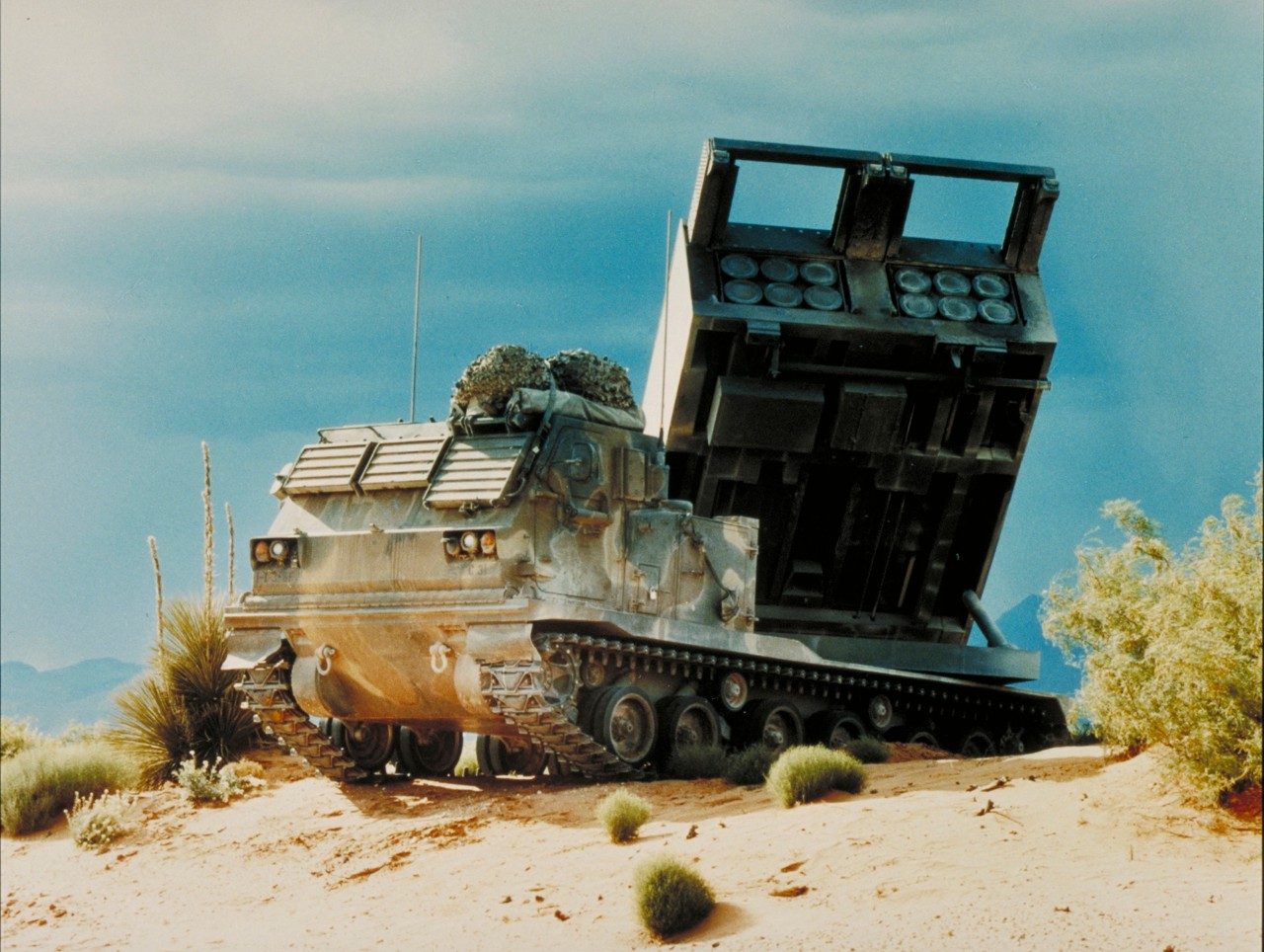On the evening of February 13, 1991, on an arid patch of land where the borders of Iraq, Saudi Arabia and Kuwait meet, a group of 10 armored vehicles positioned itself along a two-mile stretch of desert.
Dubbed Multiple Launch Rocket Systems (MLRS), the mobile rocket launchers were the newest weapons in the U.S. Army’s arsenal, a sophisticated artillery gun designed to fire more warheads faster and farther than any of its predecessors.
Their mission was to strike enemy defensive positions from a distance at a furious pace, effectively fragmenting the Iraqi army into smaller units, which could then be engaged by U.S. ground forces.

The U.S. troops were ready. The MLRS, however, was untested. But when the go sign was given that evening, signaling the first official combat launch of an MLRS, all doubts were instantly vanquished.
The battery, firing in concert as a single unit, launched more than 100 rockets in a single minute, pummeling targets in southern Iraq with unprecedented accuracy.
In the coming days, relentless attacks from MLRS vehicles would demoralize Iraqi soldiers on the ground, ushering in a quick and decisive victory for U.S. forces in the Gulf.

Thunder in the Desert
Jointly developed by the United States, United Kingdom, Germany and France, the first MLRS model officially entered service in 1983, gradually developing into the mobile missile system used so successfully during Operation Desert Storm.
Unlike other artillery guns, which fired shells, one after another, the MLRS was designed to fire multiple missiles at one time, from two to a full salvo of 12. Propped atop an M2 Bradley Fighting Vehicle chassis, an MLRS allowed a three-man crew to drive to a site, release its missiles and then speed off at up to 36 mph across all terrains, in what became known as a “shoot and scoot” strategy. Airlifted via Lockheed Martin C-5 Galaxy transports, they were the ultimate mobile artillery piece, able to be easily moved from battlefield to battlefield as needs arose.

Once unleashed, Iraqi soldiers quickly dubbed the MLRS missiles “steel rain.” The system’s accuracy led many Iraqi artillery officers to stay in their bunkers, making it easier for U.S. ground forces to slip in and capture enemy positions.
In all, some 857 MLRS vehicles have been fielded by the U.S. military since Operation Desert Storm, with MLRS use now stretching to 14 nations, solidifying the mobile weapons system’s reputation as one of the most imposing artillery weapons on the planet.
Sources and Additional Reading
- Bin, Alberto, Richard Hill, and Archer Jones. Desert Storm: A Forgotten War. Westwood, CT: Praeger, 1998.
- Clancy, Tom. Armored Cav: A Guided Tour of an Armored Calvary Regiment. New York: Berkley, 1994.
- Tucker, Spencer C. The Encyclopedia of Middle East Wars: The United States in the Persian Gulf, Afghanistan, and Iraq Conflicts. Santa Barbara, Calf.: ABC-CLIO, 2010.
- Soviero, Marcelle M., and Judith Anne Yeaple. “The Technology of Desert Storm.” Popular Science, June 1991.




